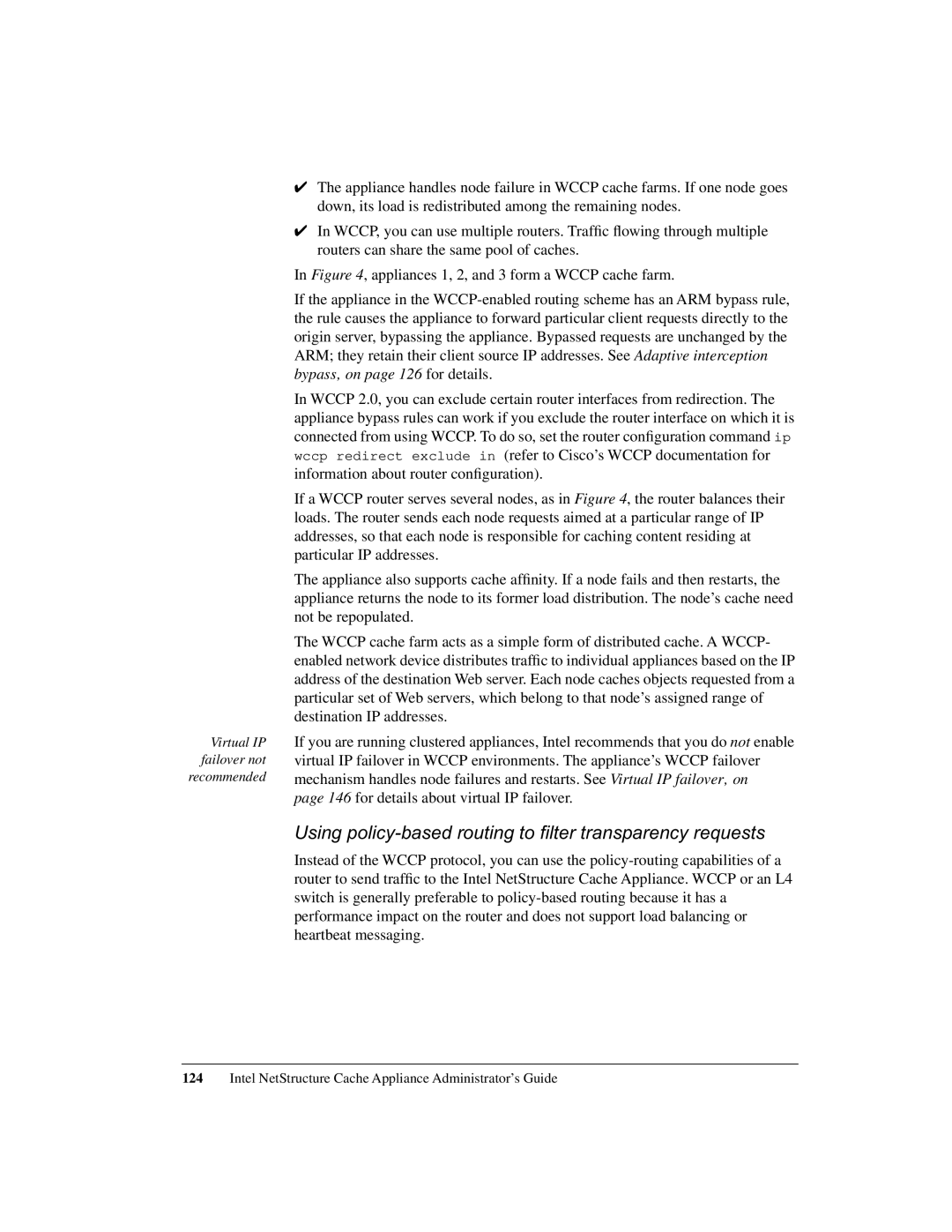Virtual IP failover not recommended
✔The appliance handles node failure in WCCP cache farms. If one node goes down, its load is redistributed among the remaining nodes.
✔In WCCP, you can use multiple routers. Traffic flowing through multiple routers can share the same pool of caches.
In Figure 4, appliances 1, 2, and 3 form a WCCP cache farm.
If the appliance in the
In WCCP 2.0, you can exclude certain router interfaces from redirection. The appliance bypass rules can work if you exclude the router interface on which it is connected from using WCCP. To do so, set the router configuration command ip wccp redirect exclude in (refer to Cisco’s WCCP documentation for information about router configuration).
If a WCCP router serves several nodes, as in Figure 4, the router balances their loads. The router sends each node requests aimed at a particular range of IP addresses, so that each node is responsible for caching content residing at particular IP addresses.
The appliance also supports cache affinity. If a node fails and then restarts, the appliance returns the node to its former load distribution. The node’s cache need not be repopulated.
The WCCP cache farm acts as a simple form of distributed cache. A WCCP- enabled network device distributes traffic to individual appliances based on the IP address of the destination Web server. Each node caches objects requested from a particular set of Web servers, which belong to that node’s assigned range of destination IP addresses.
If you are running clustered appliances, Intel recommends that you do not enable virtual IP failover in WCCP environments. The appliance’s WCCP failover mechanism handles node failures and restarts. See Virtual IP failover‚ on
page 146 for details about virtual IP failover.
Using policy-based routing to filter transparency requests
Instead of the WCCP protocol, you can use the
124Intel NetStructure Cache Appliance Administrator’s Guide
